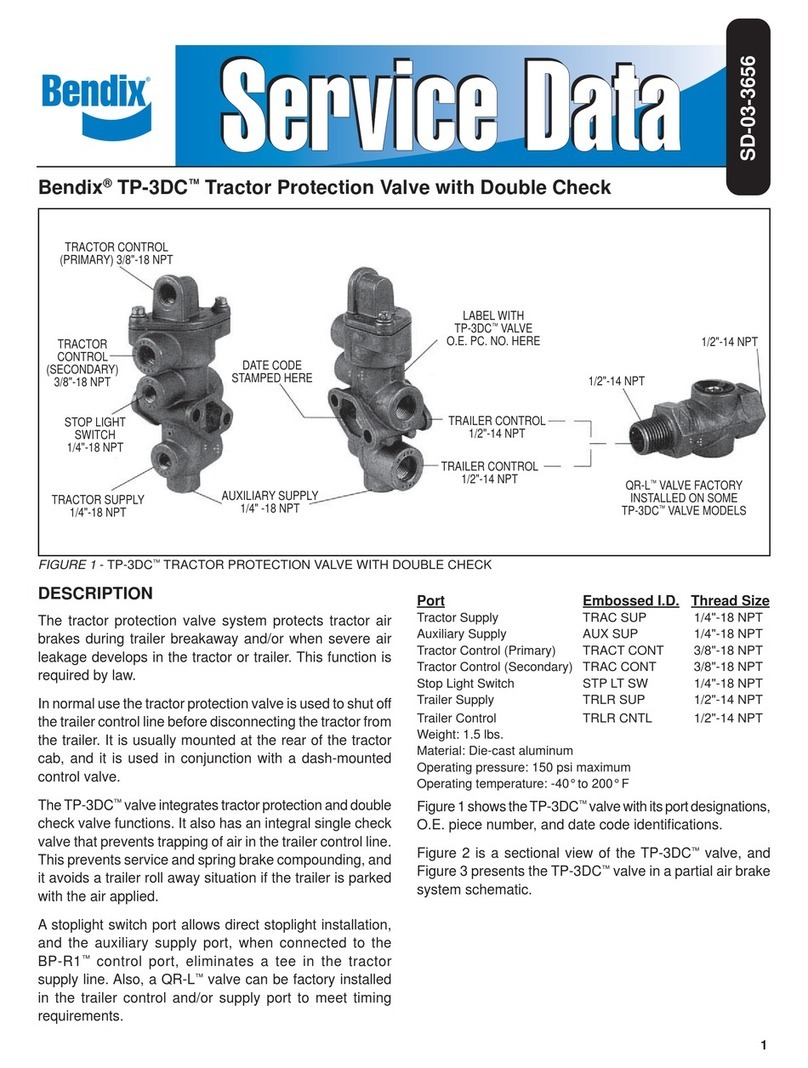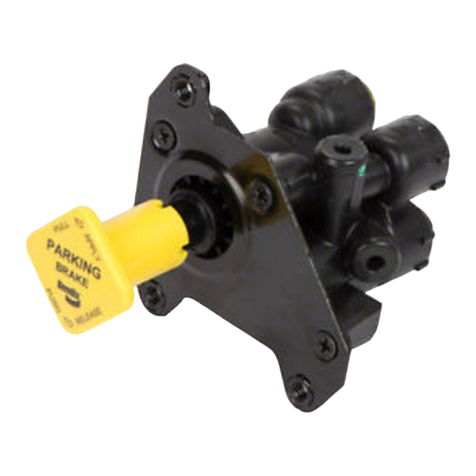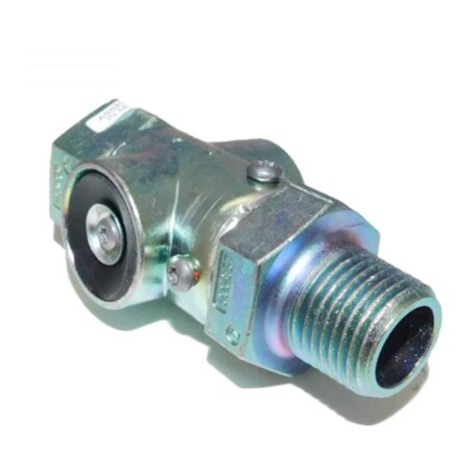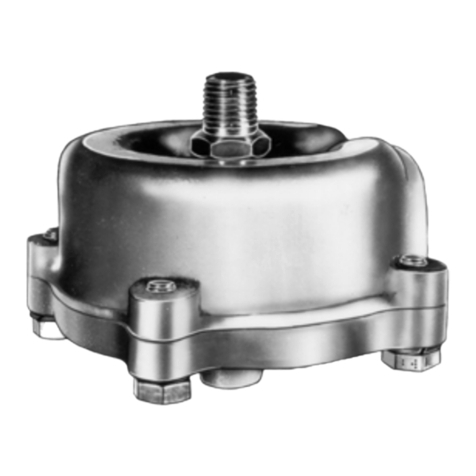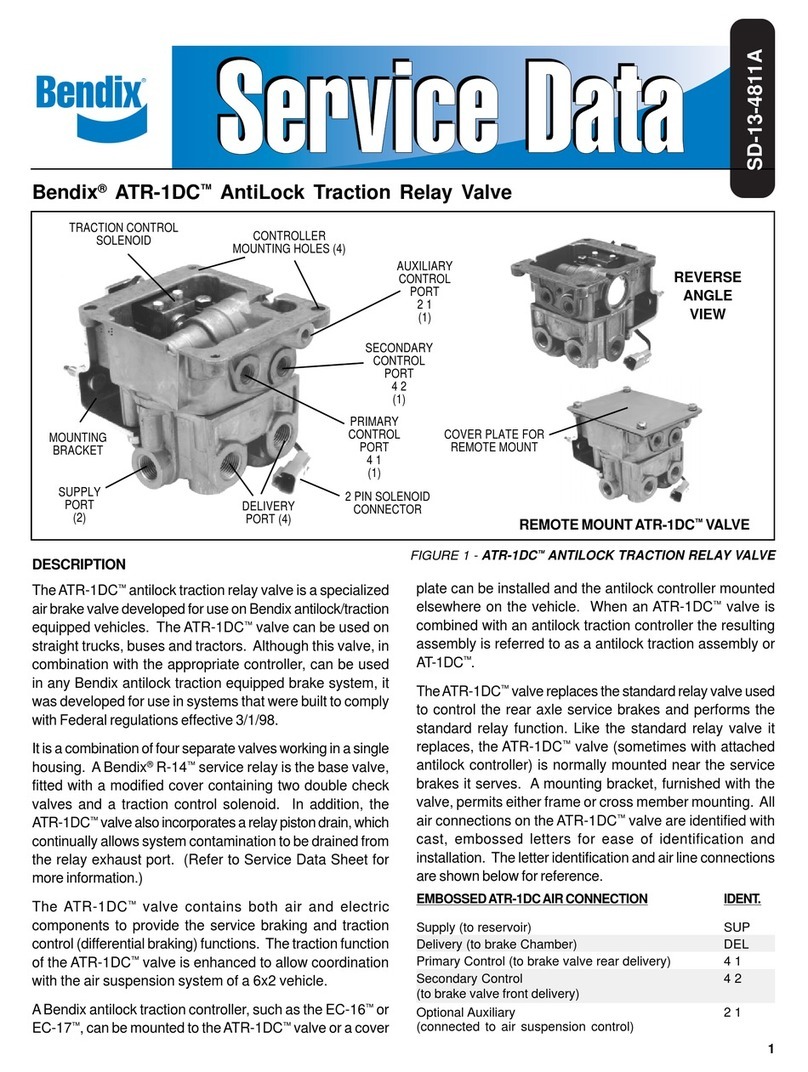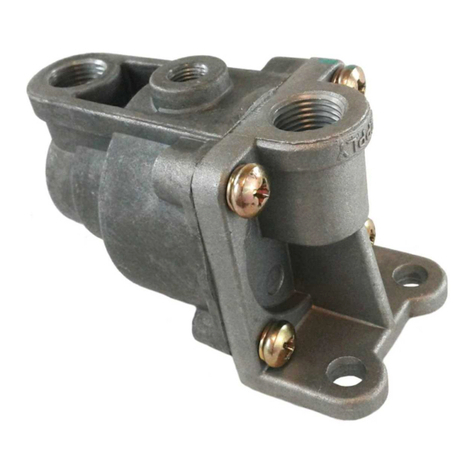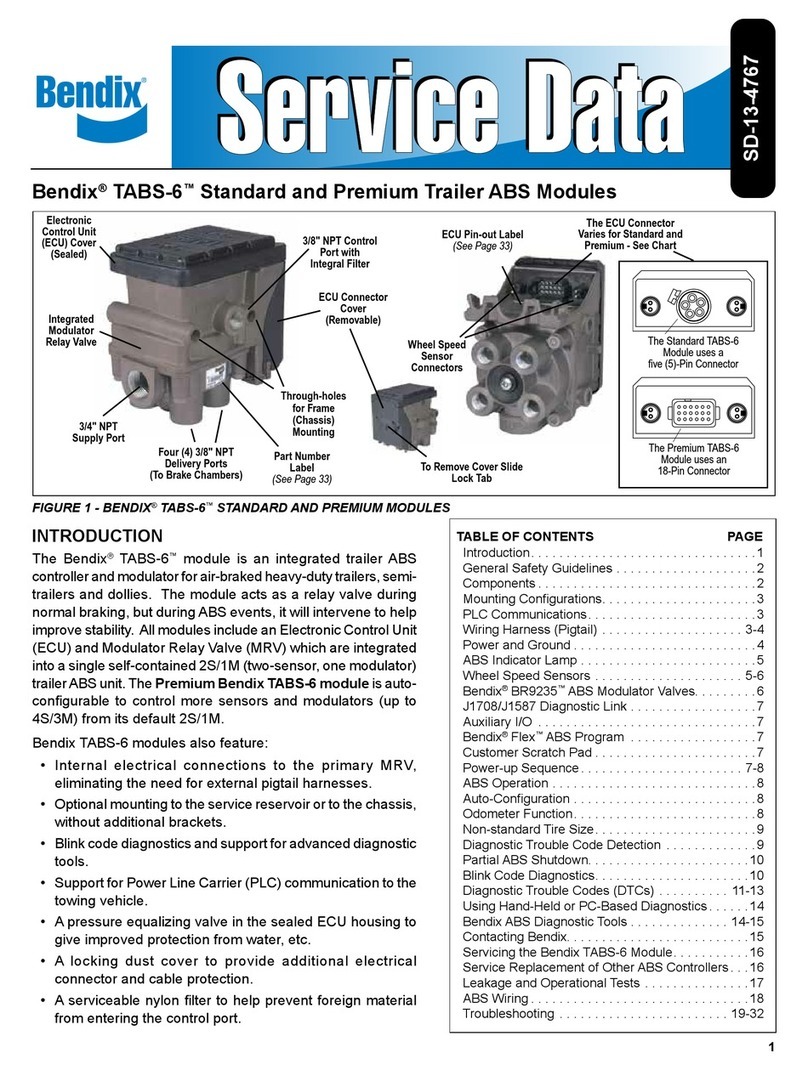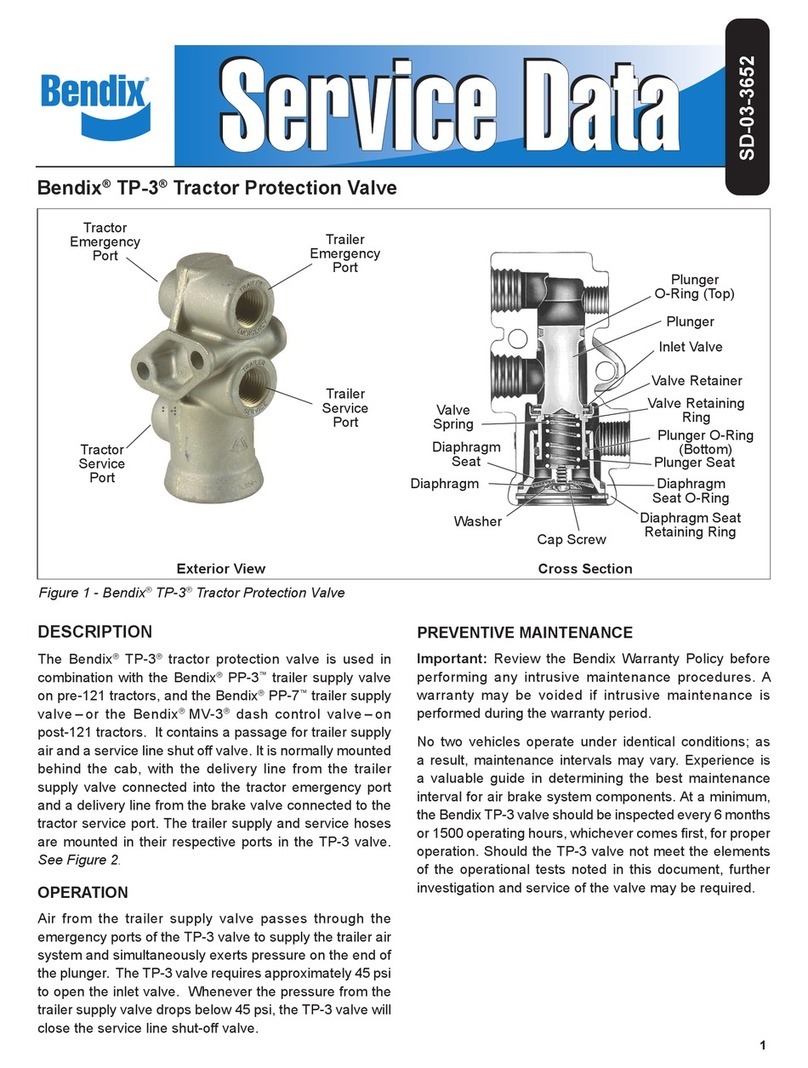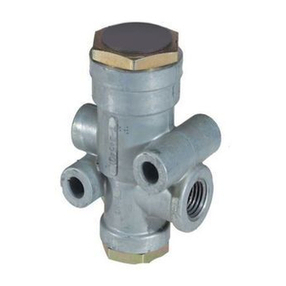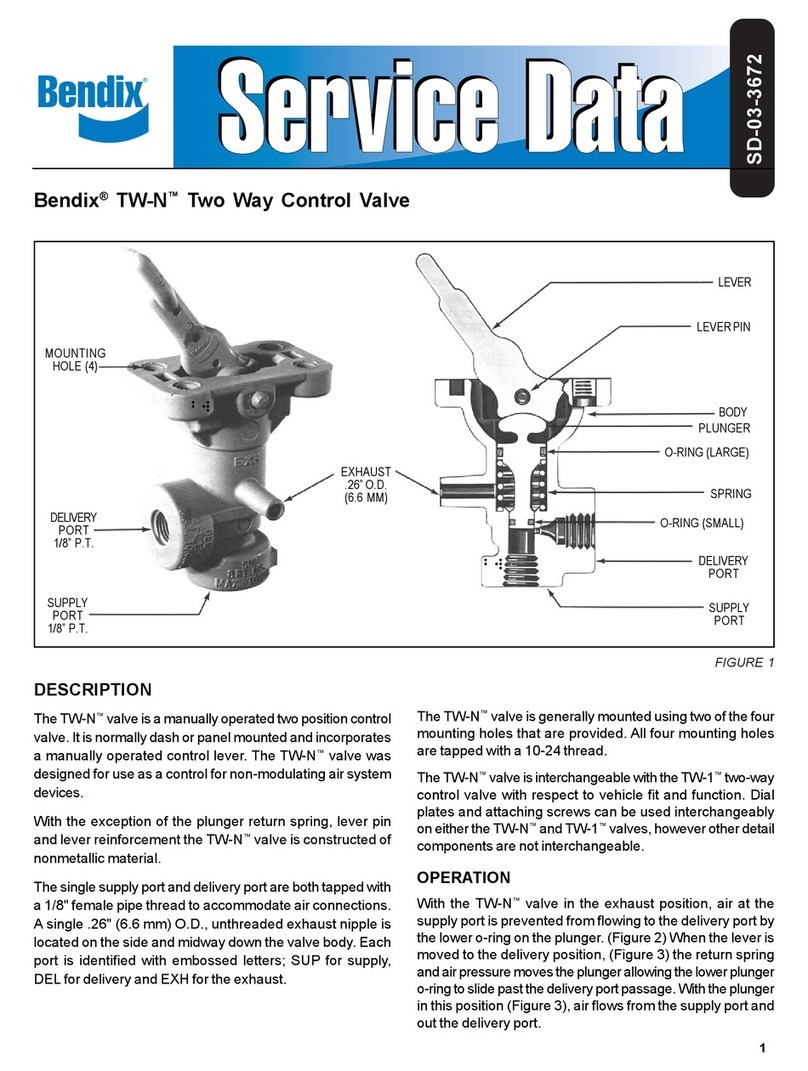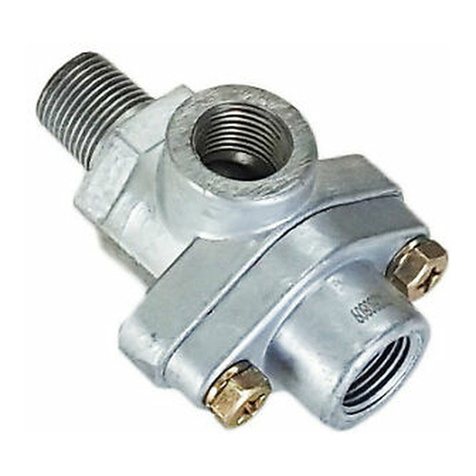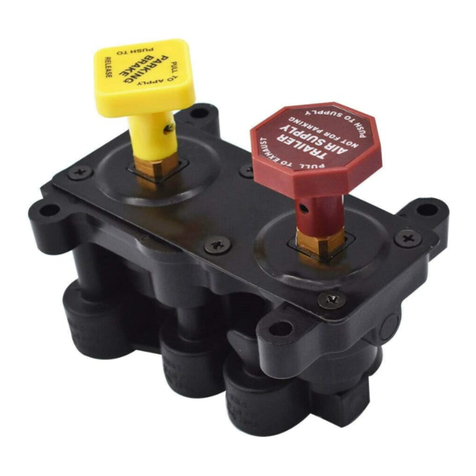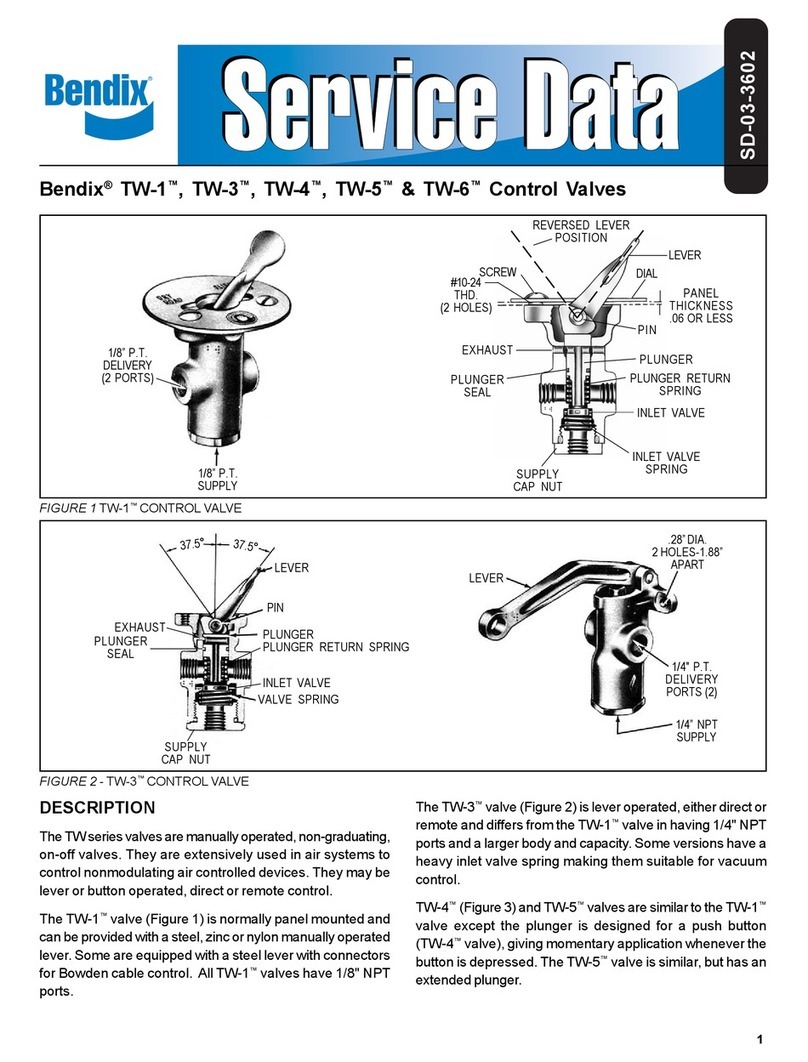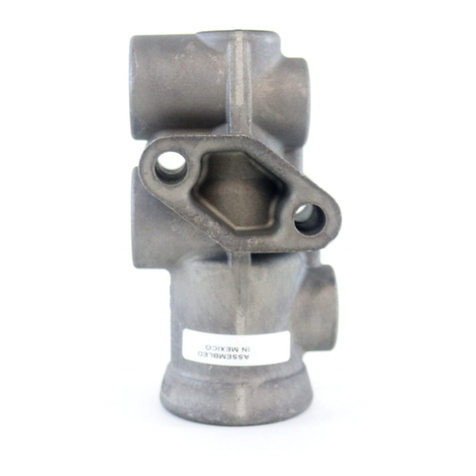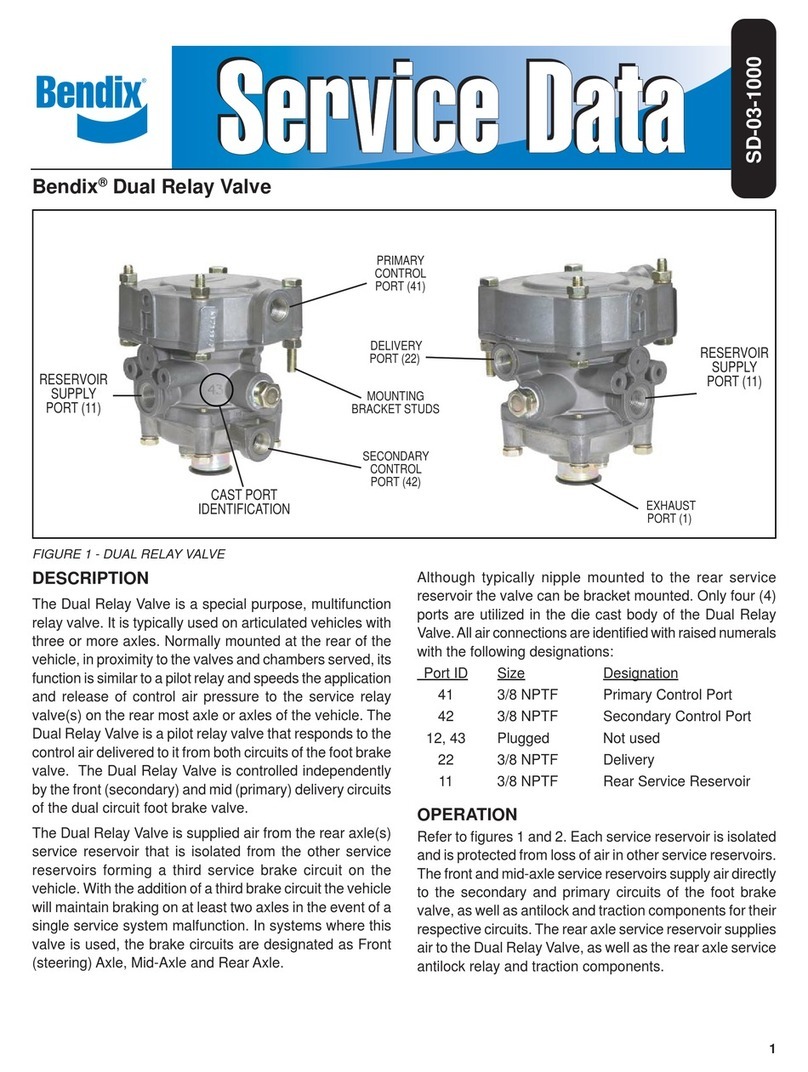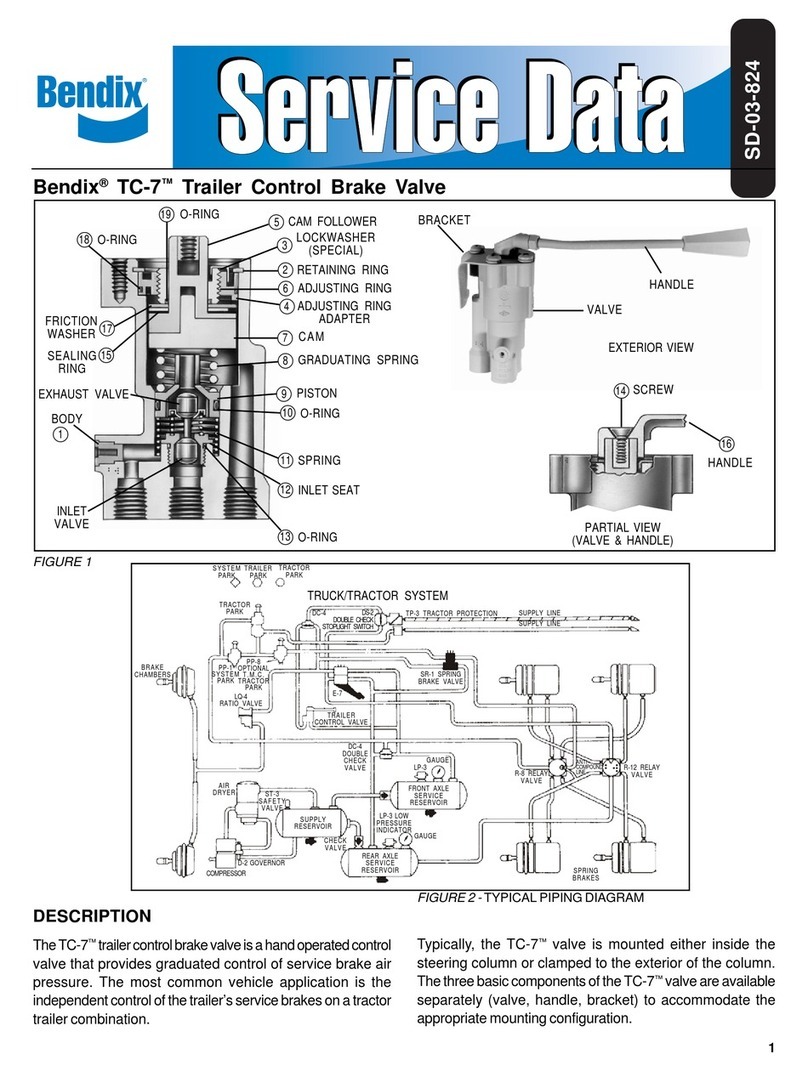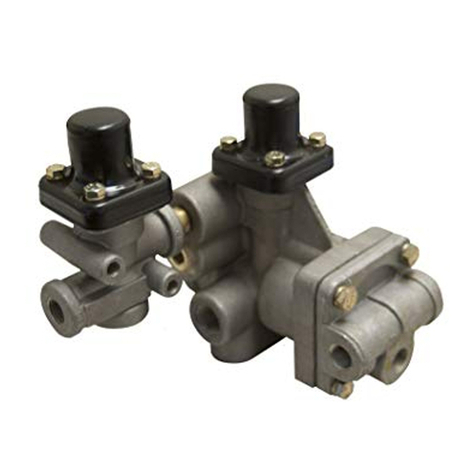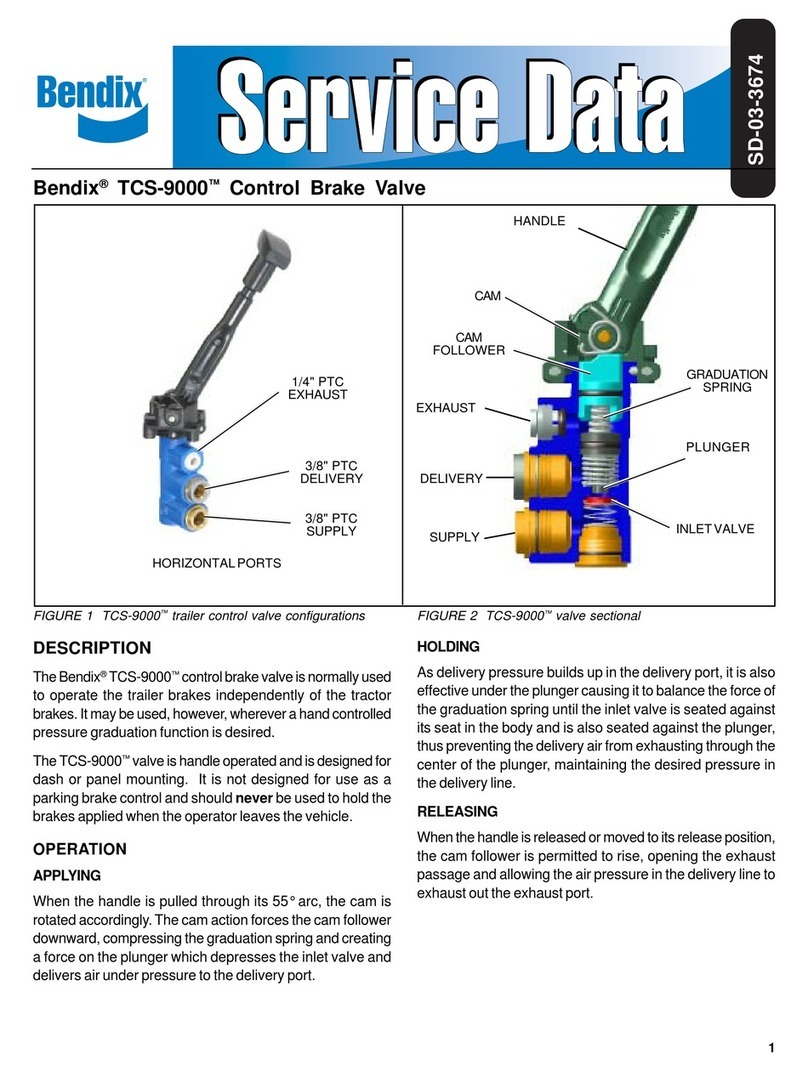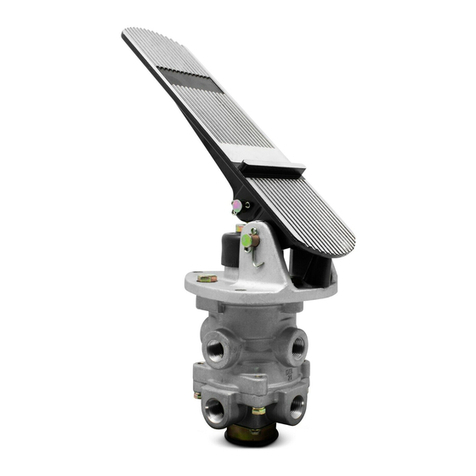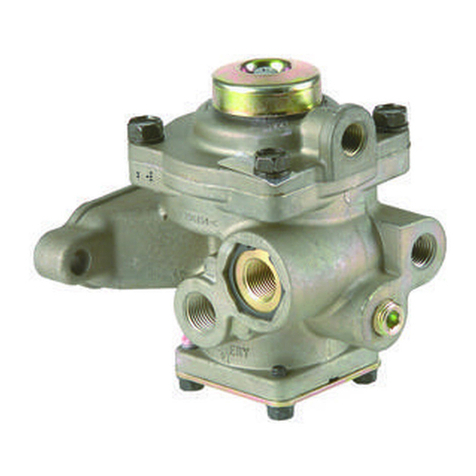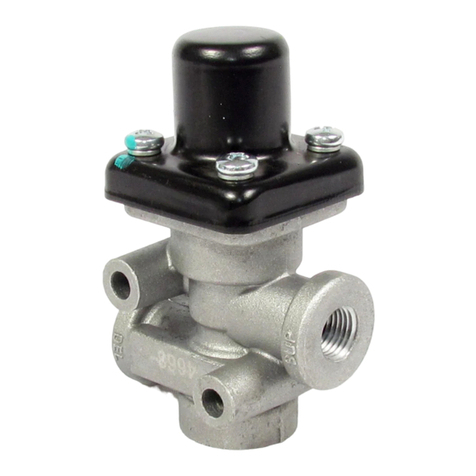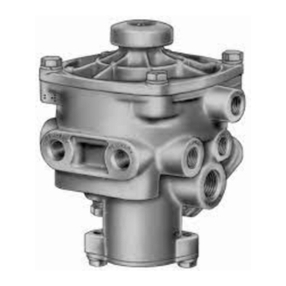
3
BALANCED: NO. 2 OR SECONDARY CIRCUIT
When the air pressure on the delivery side of the relay
piston(20)approachesthatbeingdeliveredontheprimary
side of the relay piston, the relay piston moves closing the
secondary inlet valve and stopping further flow of air from
the supply line through the valve. The exhaust remains
closed as the secondary delivery pressure balances the
primary delivery pressure.
When applications in the graduating range are made, a
balanced position in the primary circuit is reached as the
air pressure on the delivery side of the primary piston (22)
equalstheeffortexerted by the driver’sfooton the treadle.
A balanced position in the secondary portion is reached
whenairpressureon the secondary side of therelaypiston
(20) closely approaches the air pressure on the primary
side of the relay piston.
Whenthebrake treadle is fully depressed,boththeprimary
and secondary inlet valves remain open and full reservoir
pressure is delivered to the actuators.
RELEASING: NO. 1 OR PRIMARY CIRCUIT
With the brake treadle released, mechanical force is
removed from the spring seat (26), graduating spring (23),
andprimary piston(22).Airpressure andspringload moves
the primary piston, opening the primary exhaust valve,
allowingairpressureintheprimarydeliverylinetoexhaust
out the exhaust port.
RELEASING: NO. 2 OR SECONDARY CIRCUIT
With the brake treadle released, air is exhausted from the
primary circuit side of the relay piston (20). Air pressure
andspringload move therelaypiston,openingthe second-
ary exhaust valve, allowing air pressure in the secondary
delivery line to exhaust out the exhaust port.
PREVENTIVE MAINTENANCE
Important: Review the Bendix Warranty Policy before
performing any intrusive maintenance procedures. A
warranty may be voided if intrusive maintenance is
performed during the warranty period.
No two vehicles operate under identical conditions, as
a result, maintenance intervals may vary. Experience is
a valuable guide in determining the best maintenance
interval for air brake system components. At a minimum,
the E-8P™or E-10P™valve should be inspected every 6
months or 1500 operating hours, whichever comes first,
for proper operation. Should the E-8P™or E-10P™valve
notmeettheelementsoftheoperationaltestsnoted in this
document, further investigation and service of the valve
may be required.
Visuallycheck forphysicaldamagetothebrake valve such
as broken air lines and broken or missing parts.
OPERATION - Refer to Figure 3
APPLYING: NORMAL OPERATION - NO. 1 OR
PRIMARY CIRCUIT PORTION
When the brake treadle is depressed, the plunger exerts
force on the spring seat (26), graduating spring (23), and
primarypiston(22).The primary piston, whichcontainsthe
exhaust valve seat, closes the primary exhaust valve. As
the exhaust valve closes, the primary inlet valve is moved
off its seat allowing primary air to flow out the No. 1 or
primary delivery port.
APPLYING: NORMAL OPERATION - NO. 2 OR
SECONDARY CIRCUIT
When the primary inlet valve (33) is moved off its seat, air
is permitted to pass through the bleed passage and enters
the relay piston cavity. The air pressure moves the relay
piston(20), whichcontainstheexhaust seat,andcloses the
secondary exhaust valve.As the secondary exhaust valve
closes,theinletvalve(13) is moved offitsseatallowing the
secondary air to flow out the delivery of the same circuit.
Because of the small volume of air required to move the
relaypiston(20), action ofthesecondarycircuitof the valve
is almost simultaneous with the primary circuit portion.
APPLYING: LOSS OF AIR IN THE NO. 2 OR
SECONDARY CIRCUIT
Should air be lost in the No. 2 or secondary circuit, the No.
1 or primary circuit will continue to function as described
above under Normal Operation: No. 1 or Primary Circuit
Portion.
APPLYING: LOSS OF AIR IN THE NO. 1 OR
PRIMARY CIRCUIT
Should air be lost in the primary circuit, the function will be
as follows: As the brake treadle is depressed and no air
pressureis presentinthe primarycircuitsupply anddelivery
ports, the primary piston (22) will mechanically move the
relay piston (20), allowing the piston to close the second-
ary exhaust valve and open the secondary inlet valve and
allow air to flow out the secondary delivery port.
BALANCED: NO. 1 OR PRIMARY CIRCUIT
When the primary delivery pressure acting on the primary
piston (22) equals the mechanical force of the brake pedal
application, the primary piston (22) will move and the
primary inlet valve (33) will close, stopping further flow
of air from the primary supply line through the valve. The
exhaust valve remains closed preventing any escape of
air through the exhaust port.
